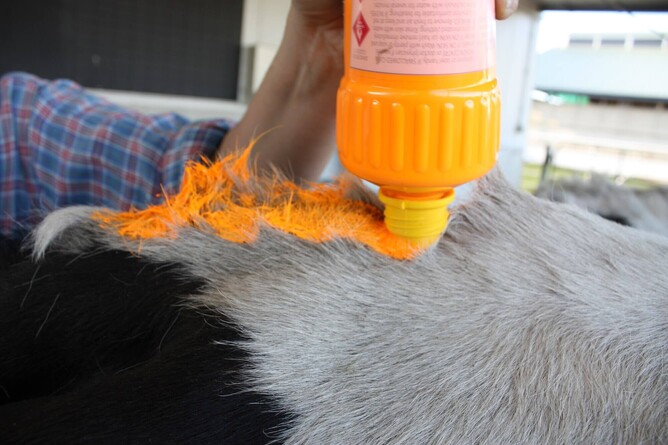Heat detection is only one piece of the puzzle towards good reproductive performance but it is easily influenced on farm and the whole team can contribute.
The results we are seeing in WelFarm and in Dairy Statistics suggest there are opportunities for dairy farmers to improve their reproductive performance. And with the mating season approaching it is a good time for farms to review their heat detection strategies.
Where to start?
- Review last season’s performance and identify the opportunities to improve.
- Utilise support to formulate a plan that will work best for you. Veterinarians, breeding companies and advisors can offer valuable advice in this space.
- Involve the whole team, it needs to be practical and they need to understand the importance of getting it right.
- Stock your heat detection kit with tail paint and any heat detection aids you plan to use. Best practice recommendations from DairyNZ’s InCalf programme promote a combination of paddock observation, tail paint and heat mount detectors to cover all bases and remove any guess work.
- Have plans for who is responsible for what and when it should be done. Ensure everyone knows what to look for and agree on a system for recording cows spotted in heat.
- Watch the cows as observing cow behaviour can help take the guesswork out, particularly if tail paint or aids aren’t clear enough.
Knowing your cows is key and when you spot they are not in their normal routine, for example in a different milking order, it’s a good sign they may be cycling.
- Keep good records to aid decisions. If there are questions about a heat, mark it on the records with a ‘?’ to help with the decision if she comes up again at a funny interval. And if there is an increasing number of uncertain heats you may need to review your methods.
- Review during the season and bring in the experts to help monitor progress. Keep your finger on the pulse and make adjustments when needed.
Don’t be afraid to change or add aids part way through mating, sometimes something fresh can help tired eyes, especially when there are less cows cycling.
Whatever your approach, having adequate support will help things run smoothly. Connect with the experts around you, ask them to help you analyse previous seasons and monitor throughout mating. Use tools like WelFarm to benchmark your seasonal progress against yourself and others.
2021-22 season reproduction results in WelFarm
| Region | 6-week in-calf-rate | |
| Northland/Auckland | 70% | |
| Waikato/BOP | 68% | |
| Taranaki | 68% | |
| Manawatu | 63% | |
| North Island average | 67% | |
| Canterbury | 64% | |
| Otago | 71% | |
| Southland | 68% | |
| South Island average | 67% |



